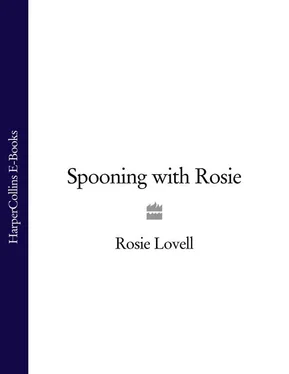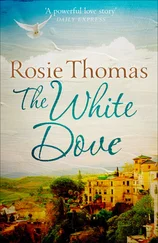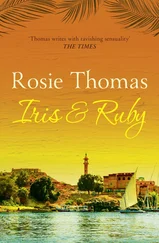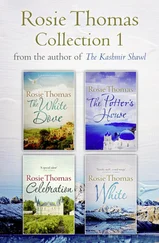2 small strong cups of espresso coffee (I use Molinari because it’s what I serve up at Rosie’s)
4 balls of good-quality ice cream
Boil the kettle to make a strong pot of coffee, like espresso, pouring over the water and letting the mountain of coffee settle until it can be easily plunged. You can leave it to sit for 10 minutes or more. The stronger the better, as it will get the heart racing. Meanwhile, bring the ice cream out of the freezer so it has time to soften enough for you to scoop it out. I sometimes serve this in my little Pyrex coffee cups, which I bought in France at a brocante. Put a couple of scoops in each coffee cup and bring to the table with the cafetière. Pour over an espresso-sized amount of coffee, or one part coffee to one part ice cream. Eat sooner than immediately.
For 2 with leftovers
My first experience with a serious lemon tart was in Toulouse on a mini-break. The boy in question and I had just shared a sturdy cassoulet by the cathedral, and were walking through the back streets when we stumbled on a beautiful teashop. This idyll was a heavenly Alice in Wonderland boudoir, with cakes piled high on tiered stands, and chic, sleek, gossiping French women. My eyes were on stalks and we shared the most delicious lemon tart. So delicious that it famously caused a stir in his trousers and it has been our joke ever since.
Here is my re-creation. It’s something to do with the contrast of the sweet pastry and sharp custard that does it, making your jaw ache with longing for more and more citrus custard. And it being a classic pudding means that pretty much anyone you are entertaining will fancy a slice. This sunny tart goes down a treat at Rosie’s because it’s just so perfectly tangy.
100g plain flour, plus extra for rolling
25g caster sugar
50g fridge-cold unsalted butter
1 medium free-range egg yolk (keep the white for meringues)
For the pastry, sift the flour and sugar together into a large bowl, and chop the butter into this. Quickly and with cold dry hands, rub in the fat until it looks like damp breadcrumbs. Separate the egg and throw the yolk into the pastry mix. With a knife, cut through the mixture to combine into a dough ball. You may need a little extra cold water to fully draw it together.
On a floured surface, roll out the pastry to fit a loose-bottomed rectangular flan tin measuring about 8 × 23cm. Sweet pastry, or pâte sucrée, is stickier than the average shortcrust, so make sure you have plenty of flour to hand. Then roll it over the tin and push in the edges, being careful not to split the pastry. Roll the pin over the tart tin to cut off any excess pastry (which you can keep aside for pastry swirls, see 69), and place in the freezer for half an hour.
Meanwhile, heat the oven to 200°C/Gas 6. When the oven is piping hot, and the pastry is really cold, you are ready to blind bake. Line the pastry tin with greased paper or tinfoil, and scatter with baking beans or dried chickpeas. Place in the oven for 10 minutes, or until the edges are beginning to brown. Keep a close eye on it. Remove the baking beans and lining paper and bake for a further couple of minutes to dry out the base. Remove from the oven to cool while you make the lemon custard filling. Keep the oven on, but reduce the temperature to 180°C/Gas 4.
2 lemons
2 medium free-range egg yolks
2 medium free-range eggs
90g sugar (caster or icing sugar)
150ml double cream, plus a little extra for serving if you like
For the lemon custard, grate the lemon zest and combine with the egg yolks and eggs. Sift in the sugar and then add the cream. Lastly mix in the juice of the lemons. Return the pastry case to the oven shelf, and pour the filling in now. That way you can’t spill it over the edge of the pastry case in transit. Bake for about half an hour, or until the top has just stopped wobbling.
For 2
My grandmother Bunty is a great cook too. When people knew little of Mediterranean food in the 1950s and 1960s, she was churning out moussaka and pasta for her large and extended family. This dish is her moniker. Though perhaps it’s brandy that is her signature really. Brought up in France, she has a tipple in her coffee every morning to jump-start her day. The brandy is a good way to inject a little life into your lover, as it has a tendency to make the heart rather palpitate.
The key to this simple dish, apart from being utterly delicious and full of kick, is in the presentation: either laying the slivers of orange out flat on a pretty, decorated serving plate, or piling them up in coloured glasses or flutes with a brandy and juice pool enticing you at the bottom.
4 oranges (I sometimes use blood oranges)
2 tablespoons granulated sugar
6 tablespoons water
8 tablespoons brandy
With a very sharp serrated knife, peel the oranges, removing all the pith. Slice them finely into roundels and arrange, as you will serve them, either in a beautiful bowl or a couple of flutes, catching the orange juice.
In a small saucepan, make a caramel syrup with the sugar, water and excess orange juice. Warm this on a low heat to reduce. It should begin to darken and thicken. When this has just turned a golden brown colour, but before it burns, pour the brandy over the oranges, and then this syrup. You can do all of this in advance. Resist serving with cream, as it curdles with the juice of the fruit. In winter, adding a cinnamon stick to the syrup will add warmth, while in summer you could add a sprig of mint.
I love dinner parties. Plotting, inviting, shopping, scrubbing, cooking…and devising the menu to fit my hatching plan: are we having a drawn-out dinner with red wine and kitchen dancing, and lots of courses, or are we having an impressive but light meal before going out like an army of ravers? And then, have we got enough chairs? I usually over-invite and end up with a ram of people around a small table. And then there is the mixing of friends, old and new. I love the melting pot.
My parents were always feeding people, beautifully, on a shoestring. Flowers crept in from the garden, chard and borage picked from the vegetable patch. My dad polished candlesticks, with Jimmy Cliff records playing in the background. As they sat down to eat, I’d sit in the dark at the top of the stairs and eavesdrop on all the family secrets. And when we were a little older, my brother Olly and I were included in these feasts of gratin, salmon and hollandaise.
My dinners are a little more informal than my parents’. I expect people to help themselves and clear the plates and really get stuck in. I probably cook more laid-back food, and things are always a bit makeshift, and quite often I forget some ingredients and have to improvise. When Alice and I lived together in a tiny little flat above a fishmonger, with no natural light, we managed to feed a stream of friends, and all around our glass-topped desk. And we were constantly broke too, so it was a thrifty but consistently exuberant business.
Esme’s Hot Wings, Daddy’s Jamaican Ackee & Saltfish, Fried Plantain & Coconut Coleslaw
For 8
My dad had a few Jamaican girlfriends in his youth, before he met my mum. He picked up this dish too, ackee and saltfish. It’s one of my all-time far-out favourites. When I moved to London with him, aged eighteen, I’d beg him to make this, whenever we were having Peckham dinner parties. Ackee is a delicate yellow fruit that feels a little like a tender egg yolk, and looks brainy. The fish is salted to preserve it, like the Spanish bacalao , and is the perfect wedding to the ackee. And of course, the ingredients are everywhere in abundance in Brixton market.
Читать дальше












